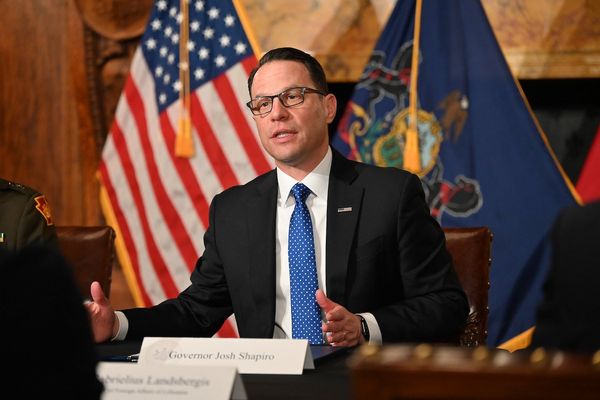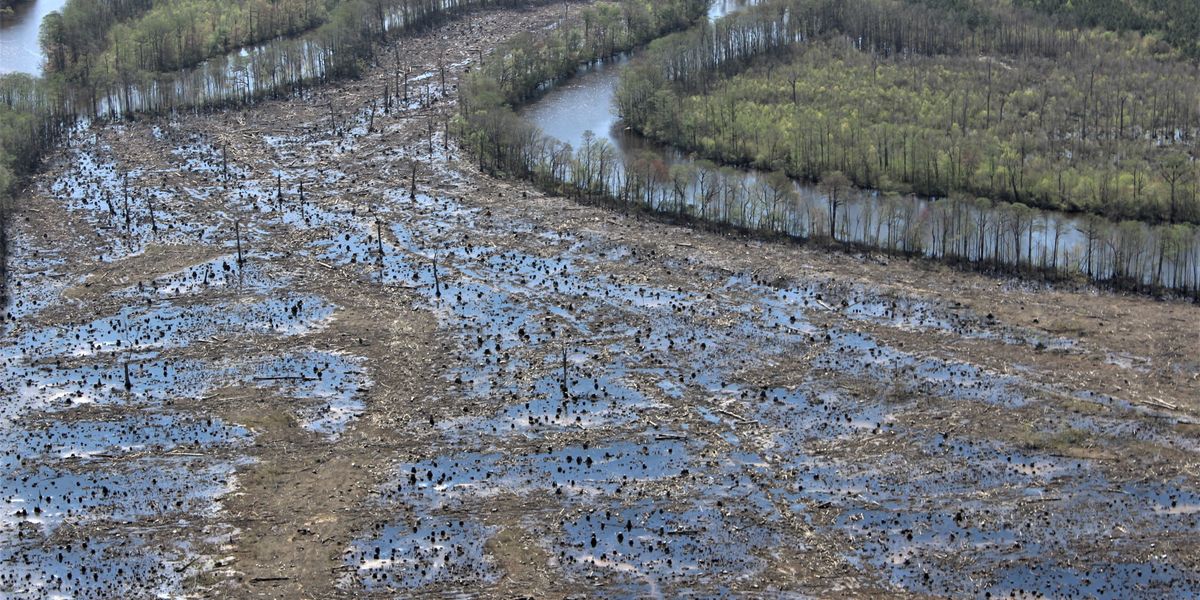
How Europe’s wood pellet appetite worsens environmental racism in the US South
An expanding wood pellet market in the Southeast has fallen short of climate and job goals—instead bringing air pollution, noise and reduced biodiversity in majority Black communities.
NORTHAMPTON COUNTY, NC—In 2013, when Enviva Biomass opened a new plant near Belinda Joyner's community in Northampton County, North Carolina, she already knew what to expect.
As the Northeast Organizer for Clean Water for North Carolina, she'd met with residents of a small, majority Black town called Ahoskie, 40 miles from her home. Enviva had built its first North Carolina plant there two years before.
The corporation, which manufactures wood pellets as a purportedly renewable alternative to coal, did what most industries do in prospective communities—they promised jobs, economic development, and minimal impacts. What Ahoskie got was approximately 50 direct jobs, local tree loss, noise, heavy traffic, air pollution, and combustible dust from wood drying and processing that threatens their health and enjoyment of their homes. On top of those impacts, as many scientists and environmental groups now say, wood pellets are not the hoped-for transition fuel championed just 11 years ago.
However, like Ahoskie, Joyner's community wasn't quick to organize against the plant.
"I made an announcement in my church that this plant was coming and I kind of gave them a gist of what it would entail and at first, you know how people just don't kinda pay you any attention?" she told EHN. "And then once [Enviva] start building it, then they were saying 'oh this is coming,' and I told them 'this is what I tried to tell you all about.'"
In June, I interviewed Joyner and other members of her community in Northampton County, which is located in the Northeast corner of the state, close to the Virginia state line. The area is rural, and peppered with industries—including Westrock Paper Mill, a warehouse and distribution center for Lowe's Hardware, an industrial hog farm, and Enviva. Until it was canceled in late July, the Atlantic Coast Pipeline was slated to run through the county, connecting to a newly constructed compressor station.
The county is also majority Black (57 percent), with 21 percent of residents living in poverty compared to 14 percent statewide, according to the most recent data from the U.S. Census. The county's median household income is 38 percent lower than the state as a whole; it is classified by North Carolina as a "Tier 1" county, meaning that it is among the 40 most economically distressed of the state's 100 counties.
Related: Climate catastrophe spurs migrants in US South
Joyner's home sits in a cozy loop of houses in a small Northampton County town. As I pull up to her house, she's sitting on her porch with her sister and neighbors, chatting with masks on. The community is tight; they've shared a lot of their lives in this place.
For seven years, they've also had to share the burdens and losses from Enviva.
"I call Northampton County the dumping ground," Joyner said. "Being that we live right here off I-95, and it's easy access, they just feel like more or less they can just come in here and give us anything, and we're supposed to be happy after we get it."
Enviva is the world's largest producer of industrial wood pellets and is part of a rapidly growing industry in the U.S. South, where companies find ample forests, lax business regulations, and ports along the Atlantic coast. Though there is some domestic demand for wood pellets for electric utilities—particularly in the Northeast—the majority of wood pellets manufactured in the region are exported to the European Union (EU) and the United Kingdom (UK), to fulfill global commitments to mitigate climate change by reducing reliance on fossil fuels.
Other wood pellet companies have flocked to the region, including Drax, a major energy utility in the UK that now manufactures wood pellets in the U.S. South to burn them overseas in its power plants. Collectively, the region's wood pellet industry exports more than 7.4 million tons of pellets per year. With facility expansions and several prospective plants on the horizon, that number is expected to climb in coming years.
From Northampton County to Alabama's Black Belt, residents and activists say companies like Enviva exploit mostly communities of color with promises to build up busted local economies with a "green energy" industry. Instead, communities hosting wood pellet facilities are not only further burdened by pollution and other local dangers, they are also entangled in yet another climate damaging trend—the destruction of biodiverse hardwood forests and the rise of monoculture tree plantations to produce energy that appears to pose climate threats similar to coal.
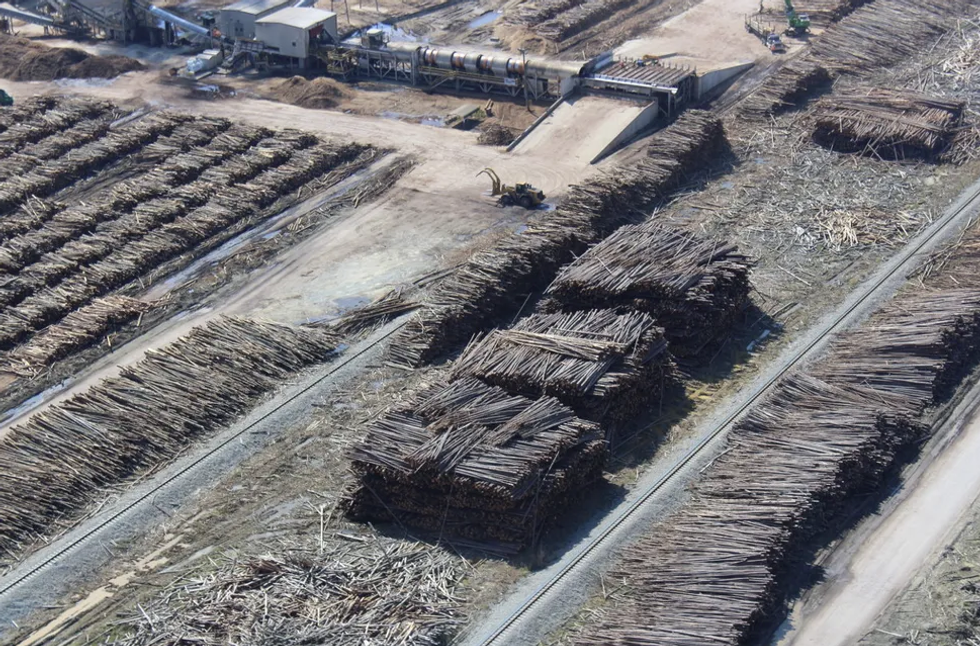
Piles of trees and wood residuals stacked in preparation for wood pellet production at Enviva's Northampton County facility. (Credit: Dogwood Alliance)
The “transition” fuel
The rise of the wood pellet industry in the U.S. South can be traced back to 2009, when wood pellets were touted as a "transition fuel" that could be used to advance the European Union's (EU) climate goals—a 20 percent reduction in greenhouse gas emissions from 1990 levels, and a 20 percent increase in renewable energy by 2020. Wood pellets were considered to be renewable energy because replanted forests could recapture carbon lost in the clear cutting and burning process. They were also coveted because unlike solar, wind, or water energy, wood pellets can be burned in the same incinerators as coal with some retrofits, thus eliminating the expense of new infrastructure. The U.S. South was targeted for sourcing wood pellets because of its status as the world's "wood basket"—it is the largest producer of wood products, according to Emily Zucchino, Director of Community Engagement for the Dogwood Alliance, an environmental nonprofit committed to protect[ing] Southern forests across 14 [U.S.] states.
Enviva Biomass, headquartered in Bethesda, Maryland, has a large foothold in the region, with nine wood pellet manufacturing plants across six states—North Carolina, South Carolina, Georgia, Florida, Virginia and Mississippi—and two more facilities pending. A sign outside of the Ahoskie facility reads, "This is Enviva Country." A spokesperson wrote that the company has a production capacity of 4.9 million metric tons of pellets per year.
Several other wood pellet production companies also operate in the region—Pinnacle Renewable Energy Inc in Alabama, Highland Pellets in Arkansas, Mohegan Renewable Energy in Tennessee, and Drax, which manufactures wood pellets mostly near the Gulf Coast.
But even if the EU has met its 2020 climate goals—the region claims to have already reduced emissions by 23.2 percent in 2018—the use of wood pellets raises important questions about the EU's carbon accounting, [PDM1] and even more questions about public health and climate consequences for the U.S. South, which is already bearing the brunt of climate change effects.
"As more and more science came out about the industry... it became clear that this is not the green and carbon neutral energy it was made out to be," Zucchino told EHN.
According to a 2009 study on climate accounting published in Science Magazine, at the point of combustion, wood pellets put more carbon into the atmosphere than coal, despite generating less energy per unit than coal. Other studies, like one published in 2012 in GBC Bioenergy, directly challenge the idea that wood pellets are renewable energy because forests can be replanted. The "carbon debt" generated when forests are cut and their stored carbon is burned into the atmosphere can take decades, if not more than a century, to "repay" through forest regrowth. The Intergovernmental Panel on Climate Change (IPCC) says humans must reduce carbon emissions by 45 percent by 2030 to avoid the most catastrophic climate change impacts.
What makes the wood pellet strategy even more complicated is that, due to loopholes in the EU climate policy, carbon emissions from burning wood pellets are often never counted.
Kenneth Richter, a Germany-based environmental policy consultant for the Natural Resources Defense Council, said that the loophole is due to the disconnect in carbon accounting between the EU's land use change policies and its energy policies. Carbon loss is measured only when trees are cut, and not when they're burned for power. Another problem is that when pellets are imported, the EU counts no emissions at all. Though the theory is that the exporting nations would account for those emissions from clear cutting forests, the U.S. does not account for carbon loss from the wood pellet industry because it is no longer part of the Paris Agreement on climate change.
"You have massive amounts of carbon going into the atmosphere but everyone pretends they're not there," Richter said. "Everyone else says it's someone else's responsibility."
The EU and UK also provide heavy subsidies to the industry because of the expense of importing wood pellets. Their reliance on the energy source to meet stringent emissions targets is now heavily political—and hard to correct—despite the growing scientific evidence against it.
"Energy companies in many European countries have obligations to produce a certain percentage from renewable sources," Richter said. "It's easiest to burn wood with coal, much cheaper than solar panels. They're pushing the governments—if you don't allow us to do this [burn wood pellets] and don't subsidize us we're going to fail. Drax is a prime example. It produces a large percentage of the UK's electricity. If [UK] took subsidies away from Drax, it would fail and cause difficulties in producing enough electricity in the short term."
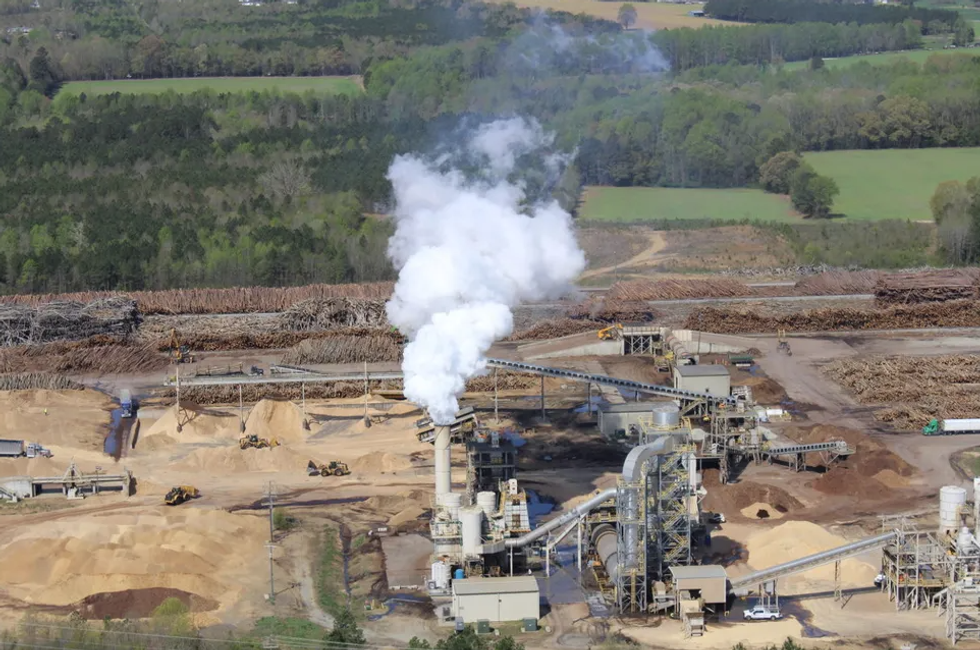
Aerial view of Enviva Biomass facility in Northampton County, NC. (Credit: Dogwood Alliance)
“It’s fine to have jobs, but give us some jobs that don’t kill us”
Northampton County residents like Joyner are more immediately concerned about the acute impacts of wood pellet manufacturing, from local clear cutting of privately-owned forests to the 24/7 production process.
"The noise... banging and during all hours of the night," Silverleen Alston, who lives about a mile from Enviva's plant in Northampton County, told EHN in our interview at Joyner's home. "I used to call up there [to Enviva] and tell them, why don't they stop, lower the noise or whatever, till I stopped. I don't even do it no more."
In addition to the noise from grinding trees and truck traffic, Alston and others complain about a constant cloud of dust flowing from the plant onto their homes, cars, gardens, and into their lungs.
"The stuff is in the air, coming [in] all directions. I keep my car in a carport, and you can see the stuff on the car. So you know it's not just coming down from above," Alston said.
A 2018 report by the Environmental Integrity Project found that 21 wood pellet mills exporting to the EU emit thousands of tons of particulate matter (fine dust), carbon monoxide, nitrogen oxides (smog), and volatile organic compounds (VOCs) per year, each of which are associated with a range of illnesses, from respiratory and heart disease to cancer. These wood pellet mills also emit 3.1 million tons of greenhouse gases per year. The report also found that at least a third of wood pellet facilities violated their air permit limits in 2017. Fires and explosions have erupted in plants in five states largely from wood dust, which is combustible. In 2017, a wood pellet storage silo owned by German Pellets in Port Arthur, Texas, caught fire and burned unchecked for two months, sending many local residents to the hospital. Later that year, a worker at the silo died when pellets fell on the Bobcat machine he was operating.
Many of Alston's family members, who live together on a large plot of land they own, suffer from respiratory illnesses that have been exacerbated since Enviva's arrival. Her father had chronic obstructive pulmonary disease (COPD) and died two years ago. Her aunt also has COPD, and her sister has to sleep on a breathing machine. Alston, her mother, and another sister all have breathing problems, though not as severe.
Related: Hog waste-to-gas—renewable energy or more hot air?
Other community members complain about not being able to spend as much time outdoors anymore.
"We have a gentleman that lives in the area, he said that he has to wash his car every three days and power wash his house every three months, and that's the stuff that comes from Enviva," Joyner said. "There's a young man that lives out there that says he doesn't cook out anymore because he can see the residue falling from the sky."
Richie Harding, a pastor of a local church in Northampton County, doesn't live close enough to Enviva to experience the dust, but the private forest where Enviva sources its trees is near his house. When I interviewed him by phone, he told me that large swaths of the forest are now gone and listed the wildlife he's observed in the area since the clear cutting.
"There's been a high increase in the amount of animals," Harding said. "Bobcats, black bears... coyotes... sightings more frequent in the Gaston area."
In an email response Enviva's director of communications and public affairs María Moreno wrote that Enviva follows all applicable environmental laws, including the U.S. Clean Air Act, and even exceeds regulation standards in controlling air pollution at its facilities.
"We use state-of-the-art, industry-proven air emission controls to reduce emissions from our manufacturing process with at least 95 percent destruction efficiency," Moreno wrote. "We are going above and beyond what is required by the law as an industry leader to show our commitment to environmental stewardship in the communities where we live and operate."
Despite installing additional pollution controls and obtaining an environmental justice (EJ) analysis approved by the North Carolina Department of Environmental Quality (NCDEQ) last year, Enviva's claims do not reflect the daily experiences of residents living near the facility. In my interview with Alston, she told me that her husband still has to wash the dust from the plant off their car every other day. Further, a 2018 study of wood pellet mills in the U.S. South found that all wood pellet mills in North Carolina and South Carolina are located in low income communities of color typically overburdened by toxic industry. Across the region, the authors found that they are 50 percent more likely to be located in low income communities of color.
As for the forest impacts, Moreno wrote that Enviva only takes "low grade wood," which is a "by-product of a traditional timber harvest," and that the higher demand for forest products like wood pellets leads to more forest growth.
But Richter, the EU-based environmental policy consultant, says the term "low-grade wood" is business jargon for otherwise healthy trees that are not valuable for the industry, but are very valuable for the planet. He says the increased forest growth that Enviva claims comes from higher demand for wood products is not the same kind of naturally occurring forests that people recognize.
"[O]ften these naturally grown forests are cut down and replaced with something that's essentially a plantation," Richter said. "Trees in rows, monoculture. One species, fairly fast growing, hardly any space between them. Sprayed with fertilizers [and] pesticides. It's an agricultural crop. You lose the wildlife and biodiversity of what you previously had in a natural forest. Companies still call that a forest but it's nowhere near what's contained in an actual natural forest."
According to a 2018 Dogwood Alliance report, since 1953, the U.S. South has lost more than 33 million acres of natural forest, and gained 40 million acres of pine plantations.
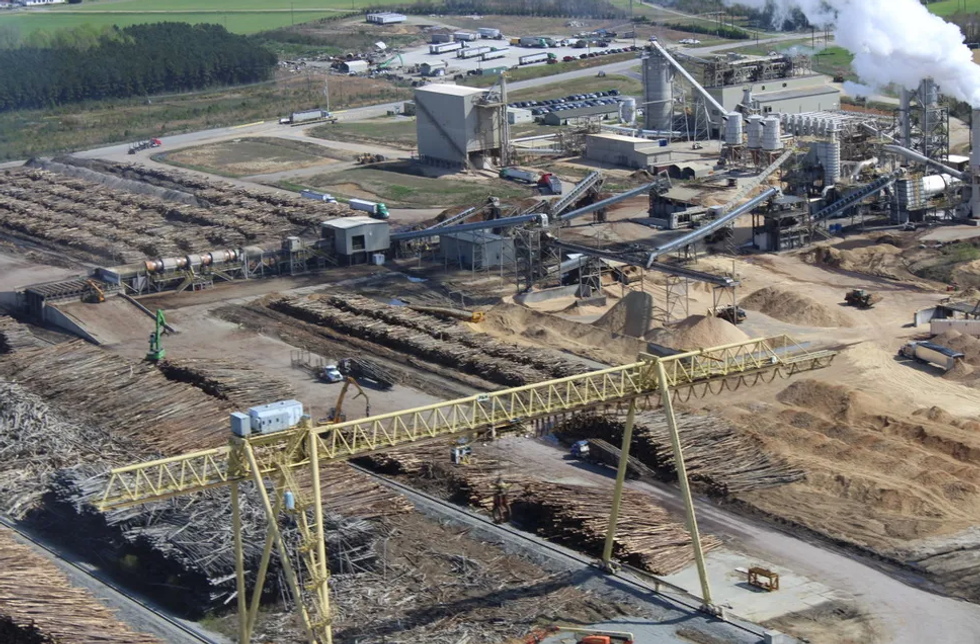
Enviva opened its second company built plant in Northampton County, NC, in 2013. (Credit: Dogwood Alliance)
Black families like Alston's and Joyner's have owned land in Northampton County for generations, and experienced the closeness and safety of the communities, the freedom of living on the land. Joyner says the noise and pollution made some people in her community want to move away. She called one of her friends who moved an hour south to Zebulon, NC, "one of the fortunate ones."
But many others can't afford to move—and some don't want to. "[Enviva] had mentioned to us, you know, had we thought about moving?" Alston said. "I'm on family earned land, that my grandaddy was invested in. To me, I really can say they couldn't pay me enough to move."
Enviva got support from Northampton County Commissioners before opening the plant in 2013. They made the same promises that they made to Ahoskie—economic development and jobs. But according to Joyner, the public hearings for Enviva's permit, organized by NCDEQ, were mostly publicized in newspapers and on posters tacked along the road. Not many knew they were happening, or understood what was at stake, so there was low attendance.
"If you really wanted to know what [the poster] was, you basically had to get out of your car and go and look at it," Joyner said.
After the plant was built, and residents began experiencing the pollution and noise, they joined forces with Dogwood Alliance, which has been monitoring the growth of the wood pellet industry across the U.S. South, to advocate for improved environmental conditions at the plant. But after several meetings with the county commission, Enviva plant administrators and the company's former public relations director, there were no improvements to the plant; the company has donated resources to local schools and meals to local residents.
Last year, NCDEQ granted Enviva a permit to expand its Northampton plant , increasing its production capacity from 550,000 metric tons per year to 781,255 metric tons annually.
"We had a public hearing on the 20th of August last year," Joyner said. "We had 40 or so people there opposed to the expansion and of course the only people who were for the expansion were people who worked for Enviva."
Even if Enviva exceeds the requirements of its own air permit in its expanded facility, as Moreno wrote in our interview, there are still concerns about further deterioration of environmental quality in the community, and what it means for residents' health.
"When I looked at the officer that was choking George Floyd, and he said I can't breathe, this is the same thing that the industries are doing to our communities," Joyner said. "It's fine to have jobs, but give us some jobs that don't kill us."
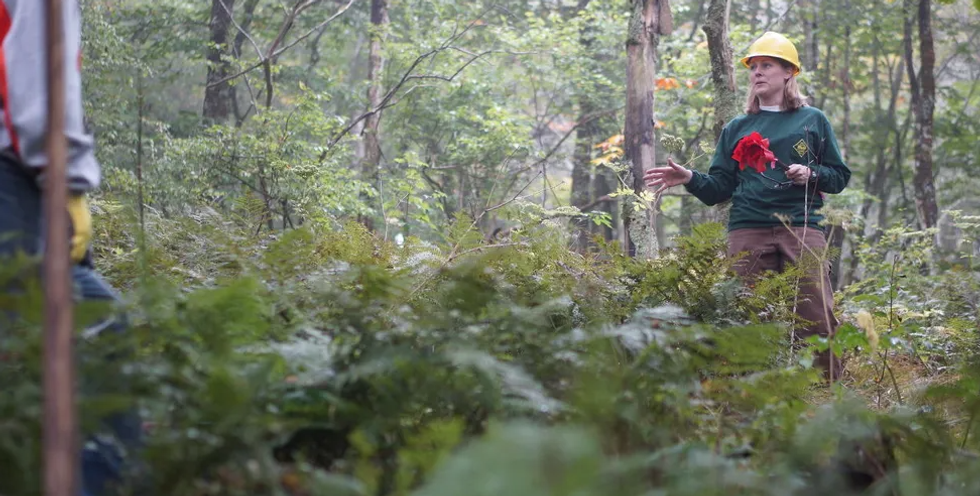
North Carolina biologist Chris Kelly with flags to mark planting sites as a part of an effort to restore red spruce in the Southern Appalachians. (Credit: USFWS)
Expansion into other communities of color
As the wood pellet industry continues to grow across the South, Enviva has targeted Alabama and Mississippi for future expansion. The company is building facilities producing significantly larger quantities of wood pellets for export through a deep water marine port and storage silo currently under construction in Pasagoula, Mississippi. In each state, the company's pitch remains the same: jobs and economic development.
"They go into these low wealth communities, promise opportunity, and a lot of residents bite on it," said Rev. Michael Malcom, executive director of Alabama Interfaith Power and Light. "If we could get ahead of this, we could go in and tell them about the dangers of the wood pellet industry. But unfortunately, the way the system works in Alabama, ADEM keeps things under wraps until it's time for the public hearing."
Alabama has the third most timberland acreage in the contiguous 48 states, much of it in the form of pine plantations owned by private absentee landowners disconnected from local residents. Enviva's first Alabama facility will be located in a small Black town called Epes, and is projected to open in 2021, with a production capacity of over one million metric tons of wood pellets per year. The Alabama Department of Environmental Management (ADEM) approved the permit last December, with additional support from Alabama governor Kay Ivey.
Malcom said it is likely that Enviva spends as much as a full year making the case for a new manufacturing plant in a community, promising good jobs and low environmental impacts.
"When they announce [the facility], it's already too late. [Enviva has] already gone in [to the community] and greased the wheel," Malcom told EHN.
Through mutual connections to the Dogwood Alliance, Malcom teamed up with Mississippi-based Katherine Egland, Chair of the NAACP Environmental and Climate Justice Committee and Co-founder of the Education, Economics, Environmental, Climate and Health Organization to develop interventions for preventing the growth of the wood pellet industry in the Southeast. Their first chance was in Lucedale, Mississippi, a predominantly White rural community, where Enviva is now constructing a facility permitted last July. Malcom said Enviva had already convinced many people that the mill would be a good thing for the community, bringing much needed jobs.
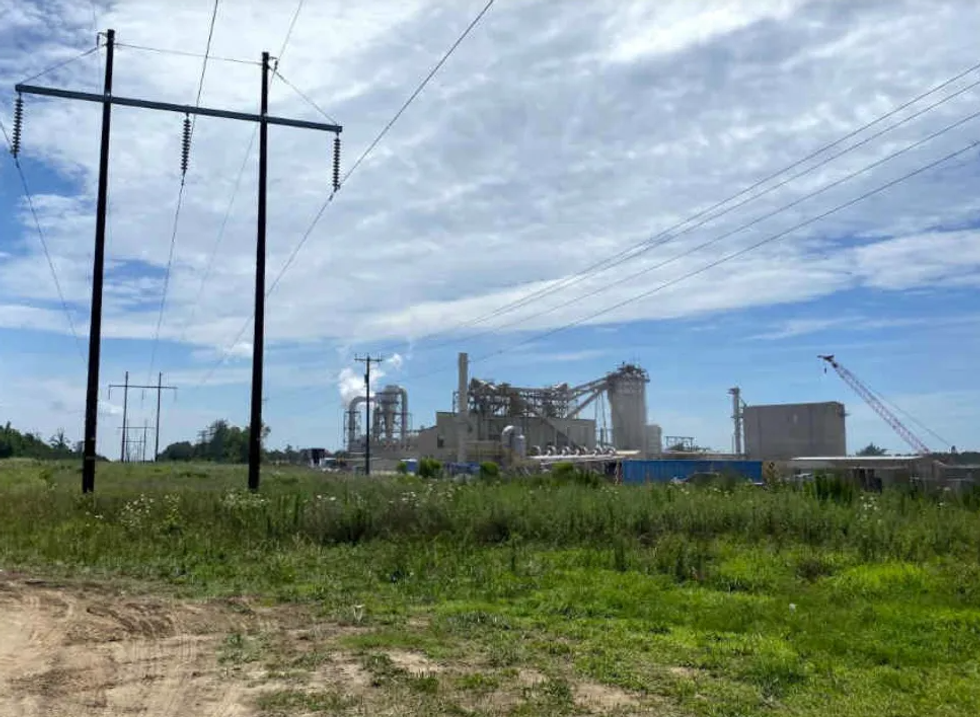
Last year, Enviva's Northampton County plant received an air permit from the Division of Air Quality of NCDEQ to increase its wood pellet production capacity by 45%. (Credit: Danielle Purifoy)
"[At the public hearing] they were basically shooting our talking points back to us and saying, 'so what?'" Malcom said. "One guy literally said, 'They [Enviva opponents] tell us we can get cancer. What's wrong with that? Got to have something."
After the hearing in Lucedale, Enviva released a statement saying that it was "proud to have the opportunity to create 90 direct jobs in Lucedale, 30 direct jobs in Pascagoula, and hundreds of additional indirect and construction jobs." It also made a disclaimer that any 'forward looking statements' about its operations were estimated projections, and could not be assured.
Regardless of the jobs projections, Zucchino said that the longer term impacts of the industry undermine other forms of economic growth.
"Industrial logging-dependent communities are some of the most poverty stricken places in the South," Zucchino said. "If industrial logging were the solution to these places, they'd be some of the wealthiest on earth. It's just not true."
Back in North Carolina, a predominantly Indigenous and Black community in Robeson County, were largely unswayed by the economic promise of the wood pellet industry. Already burdened with hog factory farms, coal ash waste sites, a landfill, a poultry litter burning plant, and increasing flood risk due to climate change, Robeson County residents mounted a long opposition campaign against a new wood pellet facility owned by London-based Active Energy Group (AEG), including over 1000 public comments, substantial media coverage, and a public hearing in which an overwhelming majority of speakers opposed the plant. Nevertheless, NCDEQ approved an air permit for AEG in June. Construction is already in progress.
Unlike the white wood pellets manufactured by companies like Enviva, which require energy utilities to retrofit their coal incinerators, AEG's facility will manufacture wood pellets called CoalSwitch, designed to be a direct substitute for coal, with no retrofits required.
"There's a lot of moving pieces with this facility, and kind of a lot of confusion," Zucchino said. "Not a lot of clarity [about whether] they have contracts for export, how big are they going to be. [AEG] is pioneering this [black wood pellet technology]; they've tried it in Utah without success... it hasn't been done successfully anywhere as far as I know."
Zaynab Nasif, public information officer for the Division of Air Quality at NCDEQ wrote via email that the agency provided additional avenues for community participation for the AEG site, and responded to concerns raised during that process by adding more stringent testing requirements for hazardous pollutants to the facility's air permit.
But many residents of Robeson County, which is about 180 miles from Northampton County, are already suffering from high rates of respiratory illness, including COVID-19. Additionally, clear cutting more of the county's forests for wood pellet production will likely exacerbate the region's climate vulnerability.
"Enough is enough," said Joyner, who travels frequently to Robeson County. "I've seen the damage that has been done there. It's a shame to want to wreak havoc on a community in that way."
“We would not do this to our land”
In recent years, some new communities impacted by the wood pellet industry have begun organizing against it. Residents of the Netherlands, who pay significant tariffs for the shipment of wood pellets from the U.S., traveled to North Carolina and other parts of the South to understand the environmental impacts of the industry, and to fight for better climate policies in the EU.
"We have had people come here wondering, 'why are you doing this to your land? We would not do this to our land,'" said Harding, who lives in Northampton County. "They see that America was destroying land just for a dollar, and that was really troublesome to them. They don't understand pretty much like we don't understand."
Since Egland started organizing with Malcom in Mississippi and Alabama a couple of years ago, she's been struck by historic parallels of the wood pellet industry with other extractive legacies in the South and has been working locally and globally to motivate others to intervene.
"I am reminded with the wood pellet trade, if you look at the map of the wood pellet trade states and the former cotton trade states, they are the same," she said. "The UK ignored the human rights abuses of the cotton trade, with slavery, now they are imperiling the descendants of that same population with the wood pellets. [The U.S. South] also happens to be the most climate vulnerable region in the nation."
There are some signs of progress, including European policies limiting wood pellet imports and decreased expansion of the industry in the U.S. South. Recently, North Carolina governor Roy Cooper and NCDEQ committed to excluding wood pellets from the state's energy mix in its Clean Energy Plan.
Richter says an opening for change is on the horizon in the EU, as the government must revisit its existing climate legislation to prepare for new greenhouse gas reduction targets—a 55 percent reduction in carbon emissions by 2030 compared to 1990 levels. One piece of that legislation is the Renewable Energy Directive (RED), which he says is driving the demand for wood pellets as renewable energy. Kicking wood pellets out of the "renewables club" would kill existing subsidies for the industry, which he hopes can be diverted to pay for solar, wind, and water energy sources.
"[T]here's also the European Green Deal, the European road map for making economies sustainable. The person responsible for that is Franz Timmermans, the Vice President of the EU. He's said that bioenergy needs to be reviewed. And we hope that he can become a bit of a champion for our demands."
Zucchino also sees some momentum building against the wood pellet industry, from coalitions forming regionally, within states, and internationally.
"One of the things I'm proudest of in my time at Dogwood [Alliance] is the amount of movement building that we've accomplished around this issue," she said. "We are seeing encouraging advances in the understanding of and policy around the wood pellet industry. But we need to see more and we need to see it happen quickly."
This story was published in partnership with Scalawag and Southerly for their Powerlines series, which looks at climate change, justice, and infrastructure in the American South. The series is supported by the Temple Hoyne Buell Center for the Study of American Architecture at Columbia University, and is part of their POWER project.
Banner photo: Logged out forest near the Nottoway River in NC. (Credit: Dogwood Alliance)









